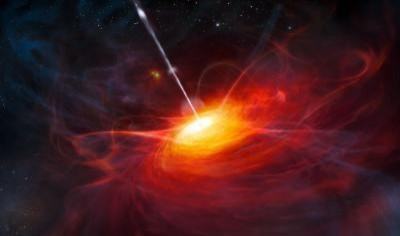Most Distant Quasar Discovered by Astronomers

European astronomers have found the most distant and earliest quasar to date.
It is an ancient galaxy with an enormous black hole at its core. It's so far away -- 12.9 billion light years to be exact - that the light that reached the earth was emitted by the quasar just 770 million years after the Big Bang.
Previously, the most distant quasar light was emitted 870 million years after the Big Bang.
Objects that lie at such large distance are almost impossible to find in visible-light surveys because their light is stretched by the expansion of the universe, University of Nottingham astronomer Simon Dye said, This means that by the time their light gets to Earth, most of it ends up in the infrared part of the electromagnetic spectrum.
The new quasar, named ULAS J1120+0641, was identified in images from a sky survey taken by the United Kingdom Infrared Telescope located in Mauna Kea, Hawaii. The detection was confirmed by other telescopes.This quasar is a vital probe of the early Universe, said the study's team leader Stephen Warren of the astrophysics group at Imperial College London.
The black hole powering this quasar was 2 billion times more mass than the sun.
We think there are only about 100 bright quasars with redshift higher than 7 over the whole sky, concludes Daniel Mortlock, the leading author of the paper. Finding this object required a painstaking search, but it was worth the effort to be able to unravel some of the mysteries of the early Universe.
This research was presented in a paper that appeared in the journal Nature on 30 June 2011.
© Copyright IBTimes 2024. All rights reserved.





















